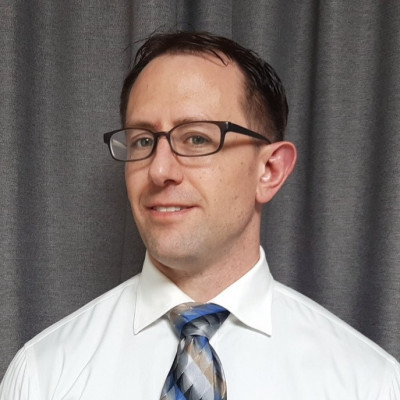Sessions / Speaking / Conversation / Pronunciation
Improve Speaking 50% in One Semester. By Speaking. #2769
This presentation has no theory, only primary sources. It is based on 10 years of Korean university freshmen conversation classes, with approximately 1500 students and 4500 conversation test transcripts. The conclusion is that if teachers will simply step aside and let freshmen speak, their speaking will improve at least 50%. Candidly, it is sinfully easy to improve their speaking ability, because candidly, their speaking ability is so low. All freshmen have had a decade of grammar-based English, and most cannot smoothly tell you what they had for lunch. For most of them, saying two self-composed sentences back-to-back would be a 100% improvement. There is absolutely no grammar, because attention to grammar in university freshmen slows down, inhibits, gums up, reduces speaking ability. This brings up the billion dollar question: Is real-world speaking ability an academic skill? YES. Clear confident speaking ability is the sign of an educated person.
Prosody Interventions 101 in the Online or Offline Speaking Fluency Classroom #2772
Although there is sufficient research supporting the usefulness of helping students to become more intelligible with speaking, until recently, few teachers offered direct instruction of pronunciation beyond the syllable level. Increasingly, more instruction is being offered, however, due to lack of confidence or practical training, teachers continue to shy away from dealing with pronunciation in their classrooms. This workshop is meant to fill some of the gaps in training and build interest in interventions with pronunciation. The presenter will demonstrate how to use short readings and listening passages to teach prosody (particularly supragegmentals). The methods used have been implemented at high school, university, and with adults (CEFR A1~C1). Preliminary data point to a deepening of student understanding of the tendencies inherent in English speaking, increased ability to catch the topic and main ideas while listening, improved awareness of own weaknesses, and greater motivation to improve own intelligibility.
The Dictoquiz: a new adaptation to an old approach #2771
Language teachers far and wide have utilized dictation activities in their classrooms for centuries. Despite the technique's popularity, only a few variations have emerged over the years (dictocomp, dictogloss, etc). This presentation will begin with a brief explanation why and how dictation works and outline some of the benefits associated with doing it. Next, participants will have a chance to learn a progressive new adaptation to dictation they can use as a form of assessment or as a stand-alone classroom activity. Finally, participants will have a chance to react to what they heard and saw and make comments or suggestions to its implementation in the modern language classroom.
Developing L2 Oral Fluency Through Digital Storytelling 101 #2989
Developing oral fluency is a top priority in a typical EFL classroom. However, teachers may encounter roadblocks to find new and engaging material to implement in their classroom. In addition, students may find traditional communicative activities, such as discussions and role-plays to be unappealing and boring. This interactive workshop will show instructors how to utilize StoryboardThat (an online storyboard creator) and guide students in creating their own digital storyboard in order to tell stories. Attendees will learn how to incorporate fluency-building strategies, such as the use of discourse markers, formulaic sequences (e.g., phrasal verbs, collocations), and consciousness-raising tasks (i.e., checklist) so that students can build and monitor their fluency while storytelling. At the end of the session, attendees will have an improved understanding of how to create digital stories while gaining strategies for building fluency in their own classroom.
The Effects of Recursive Conversations on L2 English Learners’ Speaking Competence #2683
Graduate Student Showcase
This presentation reports on the early quantitative results of an ongoing mixed methods research project comparing the effects of Recursive Conversations (RCs) (Bowyer, 2019) with more traditional focused practice activities (Cornillie at al., 2017) on learners’ L2 interactional competence. Two groups of first-year non-English majors at a Japanese university participated in this research for one academic year. Both groups began the year at the CEFR upper A2 level (Milton & Alexiou, 2009). The groups received 90 minutes of English conversation instruction per week, with Group 1 (n = 24) conducting RCs while Group 2 (n = 17) received focused practice lessons. At the end of the year, their recorded conversations were transcribed. They were then compared for spoken accuracy, fluency, and complexity using Mann-Whitney U tests. This presentation will report on these initial results, articulate the implications for the L2 teaching community, and describe the next steps of the project.
Improving L2 Learners' Spoken English Proficiency in Mainland China #2684
Graduate Student Showcase
English is seen as a foreign language in Mainland China, which means that the Chinese do not use English to communicate in daily life. Most schools pay more attention to English reading and writing competency to help students get a high score in Gaokao. However, English, as a word language, should not only be seen as a tool to get a high score, teachers should recognize the importance of applying English, especially oral English, in modern society. The lack of practicing oral English makes L2 learners be dumb English users. Graddol (2012) shows that only 7% of L2 learners "often" use English and the L2 learner's oral English proficiency is low. To improve L2 learners' oral English, teachers can use more original materials, like English TV shows or Youtube videos, to improve L2 learners' motivation and interests. Besides, new technology, like transcribing, can be applied during oral English teaching.
What’s Our Students’ Biggest Fear in the Classroom? SPEAKING! #3004
Is it that time again where I must open my mouth and speak? Why are my hands getting sweaty? My heart is pounding. I feel dizzy. I cannot concentrate. Just a few of the thoughts our students get when they are facing this challenging task. Do they need to feel like this though? Let’s make speaking something our students will not only enjoy doing but do it with confidence and a smile!
Group Drawing Activities 101 #2806
One of the first activities ESL teachers often learn to do with their classes is have students draw pictures in small groups, then present their projects in English. This is for good reason: Not only are such activities easy to implement, they also teach a variety of helpful peripheral skills such as teamwork and creativity. However, without proper execution, these activities can be chaotic for the teacher and unhelpful for the student. In this workshop, educators will be asked to reflect on their own experiences and ideas with group drawing activities, and share their insights with others. The session will build off participants' responses by incorporating them into a step-by-step system for teaching drawing activities (both in person and online) in a way that will maximize learning and minimize stress. Finally, time will be allocated for attendees to brainstorm ways they can use the workshop's techniques in their own classrooms. The workshop requires no special materials or preparation from the participants.
Encouraging Innate Speech Production to Improve Fluency and Pronunciation #2674
As part of on an ongoing project to attain greater proficiency in English as a second language, this paper provides quantitative analyses to show that first-year students at a Japanese university (n=11) can improve their fluency and, to a certain extent, pronunciation over the academic year. Through the practice and testing stages of Timed-Pair-Practice (TPP), students were able to progress in speech production in terms of speed, pausing and repair. However, despite the inclusion of prosodic training, pronunciation proved more elusive due to the wide range of prosodic features. Concentrating on pitch, duration, intensity and rhythm, a modest acoustic alteration was observed with a reduction in duration of function words and that of the unstressed syllable of content word, and a greater range in the pitch. It can be concluded that TPP was an effective tool but more focused prosodic training is required to alter Japanese mora-timing.








